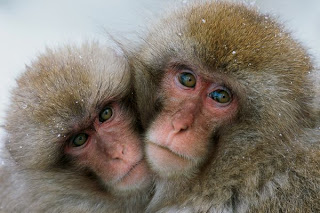Mother dogs lick their newborn pups clean, biting off each umbilical cord—an essential step in the bonding process
A giant panda might nurse her young as often as 14 times a day, 30 minutes at a time.
A duck and her ducklings walk along a riverbank. Ducklings believe that the first thing they see is their mother.
Born blind and deaf, kittens depend on their mother's sense of sight and hearing, navigating the world by touch, taste, and smell for the first three weeks of life.
A dominant mother pig typically gives birth to more male piglets than subordinate sows.
Newborn sea otters can float, but they can't swim. Mothers balance them on their stomachs.
Japanese macaques can convey ideas to one another and pass skills down, generation to generation. The macaques, also called snow monkeys, have humanlike faces that can show a lot of emotion. They live in northern Japan, where it gets very cold, so they grow heavy fur coats in the winter to keep them warm.
Giraffe mothers give birth on their feet—and their newborns drop six feet to the ground, headfirst. The fall actually helps them take first breaths.
A mare chooses the company her newborn keeps. Older siblings and trusted humans may approach, but she wards off all others.
A mother dolphin may whistle to her calf almost continuously for several days after giving birth. This acoustic imprinting helps the calf learn to identify its mother.










No comments:
Post a Comment